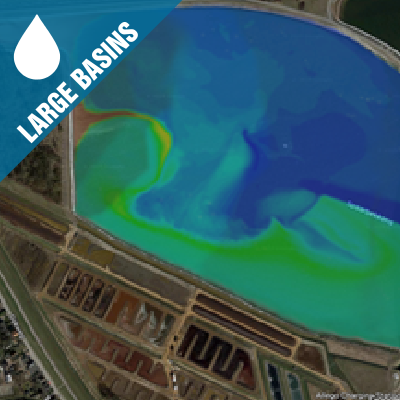How six weeks of simulation replaced one year of ozone piloting
AMOZONE was used to virtually pilot ozonation for trace organic contaminant removal in this wastewater treatment plant in the Netherlands. No onsite testing was needed to assess performance and cost.

Waterboard De Dommel (the Netherlands) saved over a year and more than 100,000 EUR by applying the AMOZONE simulation model instead of onsite piloting and trialling for their Soerendonk wastewater treatment plant.
Keep reading if you want to discover how.
How they benefited
- The AMOZONE simulations provided valuable insights that were impossible to get from onsite piloting.
- As no complex tests and analyses were needed, over 1 year of time investment and more than 100,000 EUR were saved.
- They learned from the simulations that ozone was the right technology for the Soerendonk wastewater treatment plant.
- They reached regulatory compliance.

Discover the project
We calibrated the AMOZONE model on the specific effluent matrix of Waterboard De Dommel's Soerendonk WWTP. The project was finished in 6 weeks.
- AMOZONE was calibrated based on data from 4 effluent grab samples
- The virtual full-scale ozonation plant (Figure 1) was fed with real plant data (flow rates, ammonia, ...)
- Numerous virtual 'what-if' tests were conducted, assessing MP removal, bromate formation and costs for 9 different operational strategies



The simulation model helped answer these questions:
- What's the ozone dose to reach regulatory compliance of the Dutch indicator components (e.g. 70% or 80% removal)?
- Would bromate be a risk, and what would be expected bromate levels? Can we suppress bromate?
- What would be the full-scale costs in terms of operation (OpEx) and investment (CapEx)?
Watch the case video
Discover the project results
Next to the virtual testing of nine different operational strategies (flow proportional, DOC based, UV254 based ozone dosing etc.),dynamics were investigated. The virtual full-scale ozonation plant is shown in Figure 1.

Figure 1: The real WWTP (a) and the virtual ozonation plant (right)
Figure 2 shows data that was never shown with real-life piloting due to the cost and effort of sampling and analysis. Removal of MPs, just like bromate formation, varies with water quality and time. Impacting variables include DOC, nitrite, ammonium and pH.

Figure 2: The removal of 19 different MPs over a period of 30 days. Fluctuations are caused by water quality changes (flow proportional dosing)
Next to MP removal and bromate formation, full-scale ozone demand and OpEx and CapEx were estimated for each of the tested scenarios (Figures 3 and 4).

Figure 3: The corresponding ozone demand for various operational strategies assessed

Figure 4: The corresponding OpEx (cEUR/m³ treated) for each of the scenarios

Figure 5: The corresponding TotEx (CapEx + OpEx) (cEUR/m³ treated) for each of the scenarios
In addition, some important insights were gained, such as the sensitivity of bromate on ammonia levels of the upstream biological treatment process. Here's a short video explaining the observations:
Virtual piloting with AMOZONE
You can benefit from simulation modelling throughout the entire technology lifecycle, from process design, testing, and operation of advanced oxidation or ozonation. Both for existing and new plants.
You can apply AMOZONE to efficiently design a real full-scale plant (using the CFD-AMOZONE coupling) or to run as a digital twin for smart monitoring of bromate and MP removal in real-time.
See how others applied virtual modelling
Contact us
Suggested Projects


Subscribe to our newsletter








